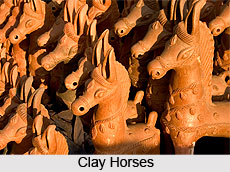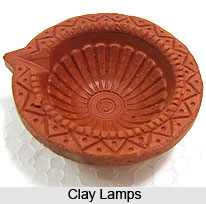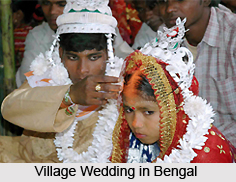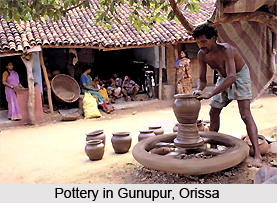 Pottery Work of Central India has greatly enriched the cultural heritage of the country. It is included among the most cherished arts of India and offers a wide range of artefacts. Ranging from utilitarian to decorative items, tremendous variety is exhibited by this art. Pottery work is an ancient art and is practiced since time immemorial. The admiration for this art has always enhanced with time and mostly the rural population is involved in this. It forms the livelihood of a large number of people in rural as well as urban areas. A number of artisans have emerged over time, who make exquisite products out of clay.
Pottery Work of Central India has greatly enriched the cultural heritage of the country. It is included among the most cherished arts of India and offers a wide range of artefacts. Ranging from utilitarian to decorative items, tremendous variety is exhibited by this art. Pottery work is an ancient art and is practiced since time immemorial. The admiration for this art has always enhanced with time and mostly the rural population is involved in this. It forms the livelihood of a large number of people in rural as well as urban areas. A number of artisans have emerged over time, who make exquisite products out of clay.
Pottery Work of Madhya Pradesh
Madhya Pradesh has a remarkable fame in pottery work. Tribal communities of Bastar, in the state, are known to produce some of the most exquisite artefacts. Common articles of this craft include traditional statues of elephant, birds, horses and serpents which are loved for their simple and elegant designs. These are generally used for offerings to the local deities. Other articles crafted with this art are clay camel, tigers and bullocks. Pottery Work of Madhya Pradesh is mainly centred at Raipur, Raigarh and Sarguja. These regions are also renowned for decorative roof tiles which are made partly on the wheels and partly by hand moulding. In rural areas these tiles are adorned with figures of gods and goddesses, elephants, bears, monkeys and reptiles. Famous Bundelkhand pottery work includes life-size images of human forms.
 Pottery Work of Chhattisgarh
Pottery Work of Chhattisgarh
In central India, pottery work of Chhattisgarh is also well acclaimed. This ancient craftwork have been transferred from one generation to another among the Kumhar Community. The raw materials for pottery work are generally taken from the Indravati River. The basic forms of this craftwork are created with the upper river soils whereas final coating is done with the deep river soils. Strength and stability is imparted to the creations by slowly burning them in fire. Skilled artisans of the state make numerous artefacts such as pots, bowls, lamps, water carriers, pen holders, paperweights etc. Ritualistic offerings of terracotta are also famous which includes figures of horses, bulls and elephants. Clay masks of Chhattisgarh are also quite famed.
Pottery Work of Central India is greatly influenced by the culture and traditions of the state and has also been enriched by cross-cultural currents. This versatile art is also known for its flexibility as the art has imbibed a number of artistic elements from the foreign cultures that have left their imprints in the central India. Artefacts crafted in central India not only add to the cultural pride of India, but also allures tourists from all around the globe.






